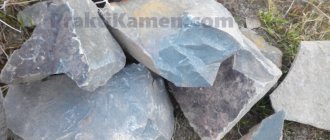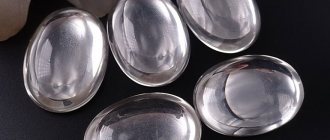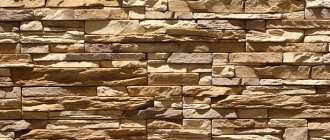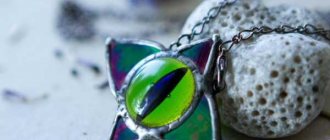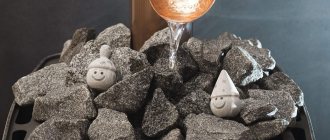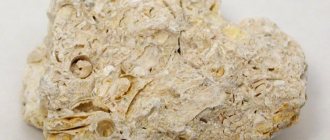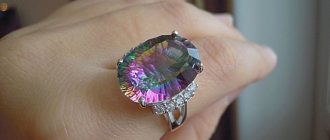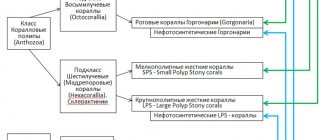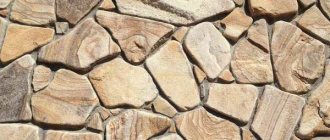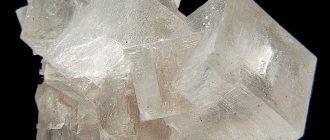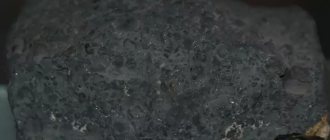History and origin
The appearance of powerful deposits of diabase, called traps, according to geologists, is caused by global changes in the depths of the planet. As a result of the processes, huge accumulations of magma approach the upper tier of the soil.
The largest deposit is located in Hindustan. Geologists say that the mineral appeared as a result of the release of magma to the surface of the earth after a collision with a huge meteorite.
The main deposits are formed in areas where volcanic lava and tuff are concentrated. Diabase is developed from sedimentary mountain deposits.
Diabase
Home >> Horoscopes for everyone >> Magical properties of stones and minerals >> The name of this stone comes from the French word “diabase”. Diabase is ancient rocks that were erupted from the bowels of the planet, representing an aggregate of augite and plagioclase. This name covers many grünsteins (greenstones) and partly traps. In addition to the named elements, various diabases also contain enstatite, olivine, biolite, magnetite, apatite, ilmenite, as well as quartz, hornblende, serpentine, limonite, chlorite formations (due to of which many minerals have green tints) and a number of other secondary products. Diabases can be different: olivine, non-olivine and quartz. Each of these groups can be divided into different types based on minor structural features, such as salite diabase, enstatite diabase, mica diabase, saussurite diabase, leucophyre and others. Diabase is largely similar in chemical and mineral composition to basalt. The structure of the stone is a fine-grained, holocrystalline volcanic rock. A characteristic feature of diabase is a fairly low level of silica content. Diabase can be dark gray or greenish-black in color. The structure of the stone is ophitic, formed by chaotically located elongated plagioclase crystals, and the spaces between them are filled with augite. Diabase is a very hard stone with high compressive strength. Diabases are often found in areas of gently sloping sedimentary rocks of mountain origin, as well as in volcanic lava and tuffs. They form sills and dikes (frozen bodies), the thickness of which can be from several meters to 200 meters and even more. Diabases can form on the seabed. They are located in covers, sheet veins and strata. Often found together with copper and silver deposits. The healing properties of diabase calm the nervous system, relieve stress, and also pacify anger and irritability. Thanks to its green color, it has a positive effect on a number of internal organs (kidneys, liver and others). Some doctors claim that thanks to foot massage with diabase balls, a person experiences normalization of blood pressure and stabilization of blood circulation, and cardiovascular activity is also stimulated. Not everyone can control the magical properties of diabase. The stone interacts only with active and ambitious representatives of the human race. Passive phlegmatic people should not rely on the magical help of diabase. Only those who believe in themselves, are hardworking and persistently pursue their goals can fully rely on diabase, which will be very supportive of such people and for their efforts will reward them with success in all matters. The stone increases the efficiency of its owner, helps him make a responsible decision in difficult times, protects from scammers and other dishonest people. If the owner of such a mineral wants to achieve success, then diabase should be worn around the neck.
| . | . www.detskiysad.ru |
Mineral mining
Fossil deposits are extensive. The most popular and studied places are the Deccan Plateau in Hindustan, the plain in Argentina, and Brazil. Minerals are mined in Ireland, Finland, and Russia. In the Russian Federation, deposits are located in the Urals, Altai, and in the region of the East Siberian Upland. In South America, monoliths are characterized by voids in which the amethyst is located.
To ensure that the fossil is not damaged during the extraction process and maintains its structure, gentle methods are used. How the first one works:
- First, a hole is drilled into the mineral.
- Then explosives are placed so that the rock blocks remain at their maximum size after the explosion.
Another option is characterized by changing the bomb to use a hydraulic method. The pit is filled with water under pressure. She tears the rock apart.
The latter option implies that the minerals are mined using a professional stone cutter equipped with a diamond-wire sawing mechanism.
Interesting to know! To extract gabbro monolith, special crushing equipment is used, which at the output will allow you to pick up pieces of different sizes and shapes.
Properties
The stone is an ecologically virgin type of material that has beneficial properties that have a positive effect on the entire body.
The stone can moderate a nervous state and has a positive effect on the performance of the kidneys, genitourinary function and liver. Using stone balls you can perform a healthy foot massage.
This stone even attracted the attention of astrologers. It has great magnetic power
This stone strengthens attachment to home, improves family relationships, and is also called the brownie stone. This stone is used to make amulets that can be worn on the fingers and around the neck.
Due to the fact that diabase retains heat for a long time and does not split (unlike granite), diabase is used in Russian baths and Finnish steam rooms.
Stones placed in ovens are able to heat up quickly and keep the temperature at high levels. These stones can withstand up to three hundred heating-cooling cycles and still maintain their integrity.
Disadvantages of stone
A minor drawback is that after drops of essential oils fall on the stone, these drops cannot be washed off and are not washed off.
A significant disadvantage of gabbro-diabase is its fragility. So, after just a year of regular use, a third of the stone crumbles, which leads to the appearance of a sulfur smell harmful to the body. And after 3-4 years it will completely crumble and become unsuitable for further use.
In this case, it is necessary to completely replace the stone, otherwise it may be harmful to health.
How to choose a stone
The main requirement before filling into the furnace is considered to be good heat transfer, heat accumulation and the ability to withstand significant temperatures. The stone should not crack from water - this is one of the main requirements. It must be dense, heat up evenly and expand equally from the heat. It is worth remembering that only environmentally friendly stones can be used in baths and saunas, one of which is gabbro-diabase.
Testing a stone for integrity and cracks is as easy as shelling pears. Tap them together or just tap them with a hammer. There is also another great way to check the suitability of a stone. It is necessary to heat the stone until red, and then immediately lower it into cold water. If no cracks or splits appear, it can be safely used in steam rooms and baths. Round-shaped stone is used for heaters or saunas. This shape perfectly helps air circulate. Stones that have potholes may crack over time.
How to care
Caring for stones is quite simple. They need to be washed a couple of times a year; after washing, the existing unpleasant smell goes away. It is better to remove cracked stones, so at least once a year you need to sort through all the stones. After use, the stones may begin to crack and crumble, this reduces heat transfer. If the bathhouse is a family one, then the stones can be replaced after a few years.
Watch the video below to learn how to properly lay stones.
Prepared by PersonSport.ru
Physicochemical characteristics
The stone is resistant to frost. It withstands temperature fluctuations. Education can withstand 300 cycles of weather changes without damage. The strength is very high, superior to granite.
| Property | Description |
| Hardness | 7 |
| Microhardness | 7 - 10 GPa |
| Compressive strength(limits) | 400 - 500 MPa |
| Specific radioactivity | up to 74 Bq/kg |
| Abrasion | 0.07 g/cm² |
| Water absorption level | 0,1% |
| Density | 2.79 – 3.3 cm³ |
Also read: Calcite - an amulet for all occasions
Chemical composition:
- SiO2 43-52%,
- Al2O3 8-27%,
- Fe3O4 1.8-25%,
- CaO 8-18%,
- MgO 3-15%,
- TiO2 0.1-4%,
- Na2O 0.5-3.5%,
- K2O 0.05-2%.
What is diabase? Properties of diabase. Application of diabase
Description and properties of diabase
Diabase is one of the oldest volcanic rocks. It is considered hypabyssal, that is, a rock formed at shallow depths and, in origin, occupies an intermediate position between deep-seated and extrusive rocks of igneous origin.
They are formed at the bottom of the seas; in addition, they are often adjacent to deposits of copper and silver. The chemical composition of diabase, the properties of which depend on its composition, is close to basalt. Its distinctive feature is its low silica content (42-52%).
The group of diabases, photos of which you will find in catalogs of mining and processing enterprises, includes greenstone rocks (another name is grünstein) and some types of traps (this is the name for a group of igneous rocks that were formed from basic magma and have a characteristic gently sloping layered bedding over a large area with fractures and exits in the form of stairs - traps).
In addition, diabases are often found in lavas and tuffs of volcanic origin. Scientists believe that the reason for the formation of diabase layers is the rise of large lava masses almost to the surface of the earth with their further solidification.
Diabase is a rock whose structure is also called ophitic. Its distinctive feature is the presence in the thickness of the stone of randomly arranged elongated crystals of plagioclase (aluminosilicate minerals or feldspars), immersed in augite (a mineral from the class of chain silicates, related to pyroxenes). The density of the material ranges from 2.79 to 3.3 grams per cubic centimeter and averages 3.07.
A characteristic feature of diabase is its exceptional compressive strength (grade is 1400 kg/cm2), as well as high hardness (on the Mohs scale it ranges from 6 to 7) and resistance to extremely low temperatures (frost resistance - up to 300 cycles). It can be colored black, grayish-black or greenish-black. The level of water absorption is 0.1%, and abrasion is 0.07 g/cm2. Specific radioactivity is up to 74 Bq/kg.
Types of diabase
There are various classifications of diabases depending on their composition, properties and origin. Diabases include enstatite, biotite, quartz, olivine, ilmenite, hornblende, chlorite inclusions, which give the mineral a greenish tint, limonite, calcite, and serpentines.
Based on their composition, diabases are divided into:
- olivine-free or ordinary
- quartz
- olivine or dolerites.
Within these groups there are also different types, such as:
- leucophyre;
- enstatite diabase;
- salite diabase;
- mica diabase;
- saussurite;
- low-colite and others.
Interestingly, the diabases themselves have several names, for example, microgabbro or dolerite; they are also called altered holocrystalline diabase basalts or holocrystalline basalts with an ophitic structure.
In the thickness of volcanic rocks they can form large monoliths (so-called dikes, vertical intrusive bodies formed when cracks are filled with magma and sills - horizontal intrusive layers).
Deposits and production of diabase
The geography of diabase is very extensive. The most studied and richest are in Hindustan (Deccan Plateau), there are many diabase plateaus in Argentina, Venezuela, Brazil and Colombia.
Diazases are also being developed in Harz and Saxony, in the territory of Fichtelbirge, Vosges and Nassau, in Ireland, Sweden, Finland. Large massifs-traps have been explored in the region of the East Siberian Upland, in Altai and the Urals on the territory of the Russian Federation. Karelian diabase is highly valued .
Frequent satellites of such massifs are deposits of rare earth metals, radioactive elements (thorium or uranium), as well as tantalum and titanium. Deposits of Iceland spar and graphite have been explored on the East Siberian platform. South American diabases are famous for their voids, inside of which there are amethyst placers.
To ensure that diabase stone retains its integrity as much as possible during mining, various gentle methods are used. The most popular are the following.
- After drilling a hole, explosives are placed deep into the rock so that the gabbro diabase are of maximum size.
- The second method differs in that the hydraulic method is used instead of explosives. The pit is filled with water under pressure and it splits the monolith into pieces.
- The third method assumes that diabase stone is extracted using a special stone cutter with a diamond-wire sawing system.
To obtain such material as crushed gabbro diabase , special crushing and screening equipment is used, which makes it possible to obtain crushed stones of various sizes and geometric shapes.
These can be traditional jaw or cone crushers, or modern impact centrifugal granulators and crushers with a cone-inertia system, allowing the production of cube-shaped crushed stone.
Application of diabase
Diabase granite is a very popular finishing, decorative and building material. The gabbro diabase material is often used to make road stones. These can be either curbs, paving stones or mosaic checkers.
The ease of application of images and durability have made gabbro diabase granite very popular for ritual products - tombstones and monuments. Jewelry is not made with this stone, but small ground pieces of the stone are worn as a talisman that gives health and balance.
Gabbro diabase granite is used in high-precision engineering; plinth stones, rubble stone and crushed stone are made from it, as well as acid-resistant powders for special masonry.
Its high heat capacity allows us to recommend diabase for baths or saunas as the main or decorative material for stoves.
This material is environmentally friendly, but rarely withstands more than two years of continuous use; in addition, it tends to accumulate carbon deposits on the surface when using essential oils and has an unpleasant odor when overheated. It takes a long time to warm up and cools down slowly.
Diabase price
Another reason why gabbro diabase for baths is very popular among builders is that it has a very affordable price.
Crushed gabbro diabase for baths or saunas, fractions 250-350, is sold in packs of 20 kg and costs about 250 rubles per pack. Before you buy diabase for your bath, make sure that the stones have the required dimensions and round shape, because processing this stone at home is impossible.
Prices for diabase crushed stone range from 300 to 450 rubles per ton. Depending on the size and degree of processing you need diabase, its price ranges from $50 to $320 per cubic meter.
The cost of diabase by region depends on their distance from mining quarries, since the delivery of heavy stone constitutes a significant portion of its final cost.
Types of stone
A popular stone is gabbro-diabase. The Karelian fossil is unique, since it has no competitors in Russia in terms of physical and chemical properties. The approximate volume of mined deposits is around 4 million cubic meters.
The composition of the rock retains heat well and transfers it. Also, the fossil does not lose its artistic qualities and polishing characteristics for a long period. In the whole world there are only two areas with mineral deposits - Australian and Ukrainian.
The mineral is classified by content and composition. The monolith contains quartz, ilmenite, olivine, biotite, chlorite compounds, which give the rock its green color, calcite, and limonite.
The composition of the breed is:
- augite - a species from North Wales that has grains of augite.
- albite – diabase from Krasnaya Polyana in the Caucasus, described by Belyankin.
- amphibole - among the minerals of which there is primary brown hornblende, which is sometimes abundant, and sometimes in a subordinate amount to augite.
- analcime - a vein-grained variety with analcime, which most likely, as in augite teschenite, was formed from nepheline.
- anorthite.
- bronzite.
- variolite - from Temelpace Mountain, California. It consists of oligoclase laths in subordinate quantities and thin augite prisms, which are placed in the groundmass consisting of calcite, chlorite and leucoxene.
- diallag - a variety with a predominance or exclusive dominance of diallag.
- dipyr - formed from dipyr and salite-like augite.
- aphanitic – at a given moment in time it is paleotype basalt or basaltic porphyrite.
- vein - a paleotype mafic vein rock consisting primarily of mafic plagioclase and augite.
- grainy.
- needle.
- quartz - together with pyroxenes and basic plagioclase, it contains quartz. Potassium feldspar is often present together with quartz, forming micropegmatite intergrowths with quartz.
- malacolithic.
- amygdaloid - consists of oligoclase, individual crystals of albite and relict grains of augite, enclosed in the groundmass of chlorite, calcite, ilmenite and leucoxene.
- olivine.
- pegmatite.
- ash.
- porphyritic.
- spotted - a breed of the Upper Harz, previously classified as variolites.
- hornblende.
- salite - diabase with many euhedral crystals of monoclinic pyroxene.
- syenite.
- mica - more or less significant content of biotite.
- saussurite - more or less saussuritized feldspar.
- teralite.
- spilite - from Weilburg, Germany.
- tuff - dense augite porphyrite, light, dark gray or black from Keweenaw Point.
- uralite.
- ball.
- alkaline.
- enstatite.
- essexitic - alkaline diabase of the essexite-teralite series, in contrast to ordinary diabases of the gabbro type. Sometimes contains nepheline, aegirine or alkali amphiboles.
- aplite - consists primarily of feldspar group minerals and was formed not by the injection of granite into diabase, but by the splitting of the same magma into two rocks.
Also read: Syenite is a quartz-free volcanic rock
Deep in volcanic rocks, minerals can form large deposits and sills. Crimean mineral is the cheapest. It consists of iron impurities, which reduces its quality.
Properties according to standards
The standards describe the properties not of gabbro-diabase stone, but of rocks in general according to where they are used, which is correct, in general - you cannot write standards for every stone.
GOST
GOST standards for gabbro-diabase refer to two areas - rock blocks crushed rock.
At the same time, the blocks relate to both construction and the manufacture of ritual products, that is, there is only one GOST for blocks, but with crushed stone the situation is different - a lot of regulatory literature has been discovered on the following areas of application:
- public roads;
- railways;
- construction works.
In order not to clutter the article, we have created a pdf file that you can download and review. There is only a list, but there is a link to the site where the full texts are published.
GOST crushed stone
Blocks of gabbro-diabase. Photo Green Time
GOST for blocks has the number 9479, there is an edition of 98 and 2011:
- GOST 9479-98
- GOST 9479-2011
Briefly, what is standardized in this document. This is an interstate standard for a number of CIS countries, in force in them, in addition to Russia. Applies to everything that can be made from a block of stone of different types.
The blocks themselves are evaluated according to indicators and characteristics, grouped as follows:
- physical and mechanical;
- radiation;
- decorative indicators;
- mineralogical and petrographic characteristics.
Measurements and tests are carried out according to separate standards.
9479 also describes the rules for acceptance, transportation and storage of blocks.
Certificates
A certificate for gabbro-diabase is issued based on the compliance of the sample provided to the laboratory with GOST standards for measurements and testing.
We have come across two types of certificates: a quality and a certificate of compliance with GOST.
The quality certificate states:
- physical and mechanical properties and their comparison with GOST;
- mineral composition;
- chemical composition;
- petrographic characteristics.
The certificate of conformity does not clarify each of the characteristics, but only states the product’s compliance with GOST 9479.
Here are examples of real certificates:
Crushing grades
First, let's talk about what crushability is. When crushed stone is under dynamic or static load, part of it is painted. Therefore, it is important to establish average values for a particular rock so that you know what to expect from it when applied.
To do this, laboratory tests are carried out, in which a batch of crushed stone is pressed with a press. In this case, part is painted out and then eliminated. This value (mass loss) is taken as an evaluation criterion.
The larger the number after the letter M, the lower the dropout rate during compression. The most durable crushed stone is marked as M 1200 or M 1400.
Gabbro-diabase crumb black 2-5 mm, 25 kg. Photo Geostyle
So, the grade of crushability of gabbro-diabase is M 1400. This is the most suitable material for road surfaces and a filler for concrete solutions.
Scope of application of the mineral
Gabbro is the main material for making monuments. The breed is reliable, durable, and helps create a strong structure. A monument from education will last a long time.
The fossil is processed using the latest technologies. The Crimean monolith is used to create tombstones.
Historical buildings were made from the Crimean diabase - Red Square and the Vorontsov Palace in Crimea.
In industry, the rock is used as stone, crushed stone for concrete, railways, and rigid monoliths are used for paving streets or large-scale construction. And sometimes the mineral is used for the production of cast products.
Due to its high heat capacity, thermal conductivity and thermal diffusivity, the stone is recommended for the construction of saunas and baths.
Moreover, it is used both as the main material and for decorating individual elements. The monolith heats up quickly, transfers heat well, and is resistant to strong heat and sudden temperature changes. Gabbro is used for laying at the very bottom; if the mineral is expensive, then for the top part. Some owners fill the stove with it.
Having equipped the furnace with dialysis, you need to heat it dry to remove possible harmful impurities.
Some owners complain that a gabbro stove gives off a terrible smell. Often the reason lies in sulfides. They look like small specks or crystals lying on the surface. They are easy to see - they shine like metal.
IMPORTANT! You need to inspect Karelian diabase especially carefully, since its price is cheap; unscrupulous manufacturers offer the buyer low-quality goods with sulfides. The substance often clogs the airways.
Mineral formation is environmentally friendly; the main thing is to purchase high-quality material.
Also read: Agate - a gift from the island of Sicily
Diabase stone and its properties. Natural stone Diabase
About precious and semi-precious stones Comments and reviews about the site in more detail... Diabase is a stone that is rarely found in nature and is valued by people for its beauty and durability. Some varieties of diabase are so rare and beautiful that they are classified as semi-precious stones - which, of course, is an exaggeration. After all, the mineral diabase is mined on an industrial scale, used widely and everywhere, and its reserves amount to millions of tons. However, this stone is by no means an ordinary one. Precious interior decorations (figurines, writing instruments, chess sets, jewelry boxes and other products) are often made using diabase. Since diabase stone does not change its properties for thousands of years, regardless of large-scale climate changes and sudden weather changes, it is often used to create monuments.
Use of diabase
In its physical essence, diabase is a composite mineral.
In fact, it is plagioclase or basalt with fragments of various rocks fused into it. Diabase “fillers” can be quartz, apatite, hornblende, as well as beautiful serpentine, limonite, and calcite. The high aesthetic expressiveness of the stone largely depends on the visual properties of the impurity grain. Hard, durable, dense, extremely durable natural material has a low coefficient of linear expansion with temperature changes. This property of diabase stone explains the high demand for it from construction organizations. Increases the demand for the material and its ability to withstand significant static loads. Diabase paving stones (Red Square is an example) last many times longer than granite ones. Facing buildings with diabase gives the buildings solidity and solidity, aristocracy and monumentality. Interior details (countertops, window sills, steps, etc.) made from diabase slabs radically change the semantic content of the architecture of the premises. Black gabbro diabase, polished to a mirror shine, often becomes the basis for placing colored decor in applied art. Pedestals for figurines, vases, bodies of boxes and writing instruments, elements of mosaic panels, fountains, pools, sundials and other products are usually made of diabase.
Cast products made from beautiful minerals are also common. The properties of diabase do not change from heating to the plasticization temperature of the massif. The stone becomes especially expressive after final polishing.
Geology and economics of diabase
Subsoil prospectors treat diabase with respect. Volcanic rock, “underextruded” to the surface, is not only good in itself, but often carries with it valuable minerals: copper, silver ores, titanium, tantalum, niobium, and other rare metals. The thickness of diabase layers and lenses can vary from centimeters to hundreds of meters. The deposits are numerous, but not of equal importance. Black Karelian diabases are valued higher than greenish-gray Crimean ones, meanwhile, the famous Vorontsov Palace in Alupka is lined with Crimean diabases and has been looking amazing for more than one and a half hundred years. Australian diabase is close in quality to the mineral from the Karelian deposit, but is three times more expensive. Each diabase deposit produces a stone whose color properties are unique. However, in most cases the mineral is characterized by the green hues of the dark rock. Diabases with a thick black color are extremely in demand. The smooth dark gray surface of the noble stone is elegant and smooth.
Medicinal properties of diabase
The abundance of diabase products in the house benefits the residents. Under the unhurried but constant influence of the stone, nervous illnesses disappear, emotions calm down, and a detached and philosophical view of events becomes achieved. The healing properties of diabase also include the mineral’s ability to optimize blood pressure and the capacity of the venous system. Massage with a diabase ball in the Zakharyin-Ged zones directly affects the internal organs and systems of a person. The uniformity of the composition of the mineral determines its ability to accumulate and gradually release thermal energy. That is why it is useful to perform local therapeutic heating using diabase pebbles - flat stones with rounded edges. Tactile contact with pronounced green diabases accelerates the healing of the genitourinary system. Crushed to a powdery state and mixed with an ointment base, the richly colored mineral becomes a healer of superficial hyperalgesia, characteristic of a disease of the peripheral nervous system.
Diabase favors initiative
The magical properties of diabase are not very “relief”, but are relentlessly powerful.
The mineral quietly suggests the right choice, helps to cope with the hardships of the initial period, and helps maintain efficiency. An important “skill” of a discreet stone is to ward off the malicious efforts of envious people and scoundrels. However, diabase only works for a person who adheres to an active lifestyle. The mineral will not only not be able to help the lazy and passive “Oblomov”, but will not even want to. It is not in vain that decorative stone is used for the construction of tombstones, steles, and grave monuments. The activity of otherworldly forces does not concern him. Diabase NEVER becomes an intermediary between the world of restless wandering souls and the material environment. Paving the main square of Moscow with diabase paving stones is also aimed at passivizing the destructive forces concentrated in the most important burial grounds of the capital. A diabase talisman worn in a pocket or on the body helps in obtaining material benefits, positive recommendations, and effective consultations. It is necessary, however, to distinguish: when providing assistance to a new cause, the diabase figurine should be worn on the left. Correcting a long-established situation requires wearing a diabase jewelry or amulet on the right. Diabase reacts equally to all signs of the Zodiac, without singling out favorites or outcasts. Perhaps only Scorpios can boast of the increased favorability of diabase, but only if we are talking about a completely black mineral. Colored and “pockmarked” objects made from diabase help Scorpios no more and no less than other members of the Zodiac circle. All stones finesell.ru
Medicinal properties
Thanks to the presence of diabase items in the house, nervous diseases go away and a person becomes calmer. The healing qualities include the ability of the mineral to normalize blood pressure. If you massage with a stone ball, it will have a positive effect on internal organs and systems.
The homogeneous structure of the rock explains its ability to retain and gradually release heat. For this reason, therapists use diabase pebbles for warming up.
Tactile contact of the body with the green stone accelerates the healing of the genitourinary system. If it is crushed into powder and mixed with cream, the medicinal composition will help relieve pain.
Properties and photos of diabase
The breed has a dense structure. The structure is fine-grained, porphyritic, ophitic or doleritic. The fracture is uneven. Diabases are dark in color: dark green, dark gray. Specific gravity is about 3 g/cm3. Hardness on the Mohs scale is 6 or 7. The compressive strength of diabases is very high and reaches values of 400 and even 500 MPa. The melting point of the stone is 1000-1250ºС.
Features . Diabase is characterized by a dense, fine-grained, porphyritic structure, uneven fracture, dark (mostly dark green) color, and high density.
Diabase. © Piotr Sosnowski Diabase Native copper on diabase. © James St. John
How to wear and care instructions
The stone will bring good luck with new beginnings and in your career. If you put a bracelet with a mineral on your right hand, a person will avoid failure in any business; if you wear it on your left hand, the owner will be approved for a bank loan.
If you need to clean a bracelet or talisman, do this with a soap solution. You can use special preparations for marble and granite. At the end of the cleaning procedure, the surface of the product must be treated with wax, which will serve as protection against dirt and chipping.
5/5 — (2 votes)
Where can it be used?
According to sanitary and hygienic standards, gabbro-diabase stone is one of the rocks permitted for use in construction with background radiation not exceeding permissible standards. This material is used quite widely in industry.
One of the features of gabbro-diabase is its interesting fine-grained structure. This stone is polished better than, for example, granite and basalt. Therefore, it is sometimes used as a facing material in the construction of buildings and structures. This breed can also be used:
- for the manufacture of paving stones (for example, exactly this material was used on Red Square in Moscow);
- in precision engineering.
Very often, tombstones are made from such stone. Polished black gabbro-diabase looks very solid and presentable. Therefore, tombstones made from it, like no other, create an appropriate mournful and solemn atmosphere at the burial site. For the manufacture of monuments, Karelian diabase is usually used, which can maintain polish for a long time.
Very often this breed is used to create optimal temperature conditions in baths. That is, they simply put these inexpensive stones in the heaters. Dense gabbro-diabase can retain heat very well and for a long time. In addition, the material is absolutely environmentally friendly.
Like granite, gabbro-diabase is often used in the interiors of apartments and houses. This material is used, for example, to make countertops, railings and window sills. Such products actually look very impressive. In addition, they also have very good performance characteristics.
Stone cost
The main reason why diabase has become a very popular material for arranging saunas and baths is its affordable cost. Crushed rock with a fraction of 250−360 is sold in 20-kilogram packages. The cost of one pack does not exceed 300 rubles. Before purchasing material, you need to make sure that the pebbles have a round shape and suitable sizes, since this mineral is completely impossible to process at home.
The cost of crushed stone from it varies between 300-450 rubles per ton. The price of the material is affected by the level of processing and the size of the diabase. In addition, it also depends on the remoteness of the deposits, since transportation of massive rock also determines the final cost of production.
Characteristics
The distinctive characteristics of the stone include its high hardness and strength. In addition, it is frost and moisture resistant. It has these properties due to the crystal lattice, which serves as the basis of its structure.
Gabbro-diabase is a holocrystalline fine-grained volcanic rock, chemically and in mineral composition close to basalt. Diabase is characterized by a relatively low silica content (45-52%). The structure is diabase (ophite); formed by randomly arranged elongated plagioclase crystals, the spaces between which are filled with augite. The name of this stone is derived from the Latin word “glaber”, which translates as “even, smooth”
Gabbro-diabase is a type of natural stone. Its inherent black color with minor colored spots distinguishes it from other types of stones. Its unusual density makes the stone very difficult to split. To process this material you need to use labor-intensive technological processes with special equipment.
Compared to other types of granite, gabbrodiabase has a low silica content (about 50%) and a high plagioclase content. Plagioclase is represented by a fine-grained (almost monolithic) structure of elongated crystals of the same size and shape.
The main indicators that are important for the use of stone are their density and heat capacity.
For convenience, see these characteristics of jade in the table. Table. Physico-chemical characteristics of gabbro-diabase
| Name of the stone | Density (kg/m³) | Heat capacity, kJ/(kg K) | average price |
| Gabbro-diabase | 2780-3230 | 0,6-0,8 | 300 rubles/20 kg |
Diabase mining
In places where diabase occurs, valuable minerals are often found: silver, copper ores, titanium, tantalum, niobium, and other rare metals.
The thickness of diabase layers and lenses can vary from centimeters to hundreds of meters.
The number of deposits is large, but they are not equal. Black Karelian diabase is considered more valuable than the greenish-gray Crimean diabase, which is used to line the Vorontsov Palace in Alupka.
Australian diabase is close in quality to the mineral from the Karelian deposit, however, it costs three times more.
Diabase extracted from various deposits differs in color. However, in most cases the mineral has greenish tints. Diabase with a thick black color is in great demand. The dark gray stone looks beautiful.
Varieties of mineral
Stone has many types. This mineral contains ilmenite, olivine, biotite, enstatite, chrolite inclusions, serpentines, calcite and other substances. Based on the substances in the mineral composition, diabase is of the following types:
- ordinary or olivine-free;
- dolerites or olivines;
- quartz.
These large groups are also divided into varieties. These include:
saussurite;- salit;
- mica;
- enstatite;
- low-colitis, etc.
It is noteworthy that diabase can be called differently. The most common names are dolerite, microgabbro, holocrystalline basalt. In the depths of volcanic rocks, stones can form quite large monoliths (dykes and sills).
